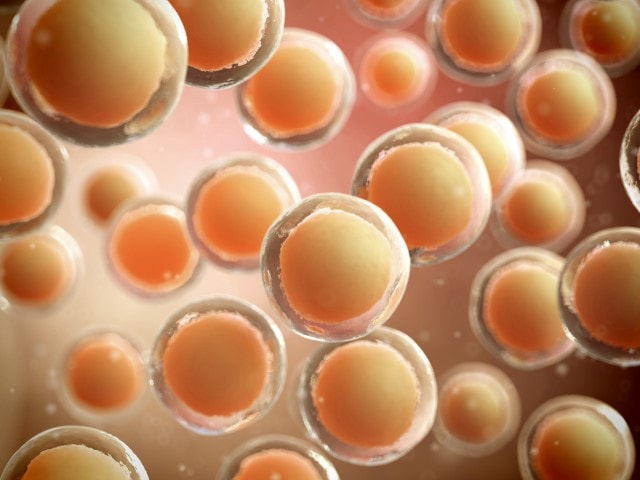
Hyperstimulation Syndrome
Our goal is to obtain a large number of oocytes (eggs) in a healthy manner in the application of egg stimulant drugs to women in IVF treatment. The name of this treatment process is called “controlled ovarian hyperstimulation”. In fact, while egg sacs are activated, there is some kind of mild hyperstimulation in many cases. However, the exaggerated occurrence of this condition is called hyperstimulation syndrome and in 5% of women in the treatment of IVF, we encounter moderate-severe forms.
It is much less likely to occur in women with limited egg reserves or older age. Because these women do not have an excessive number of egg candidates to be warned. It can be encountered more frequently in women with high ovarian reserve and especially with polycystic ovary syndrome. At the beginning of the treatment, we can predict the probability of hyperstimulation syndrome with the number of candidate egg sacs (antral follicles) determined in both ovaries.
* If there are more than 10 antral follicles in both ovaries in ultrasonography,
* If the Anti-Mullerian hormone is above 3,
* In young and weak women,
* In a woman who has previously had hyperstimulation syndrome
* The risk increases with the use of high doses of gonadotropin.
In this case, determining the risk group very well and keeping gonadotropin doses low, monitoring of eggs with ultrasonography more frequently, monitoring blood estradiol levels will be very useful in terms of prevention and early diagnosis.
As the egg sacs grow, high hormone levels produced from overstimulated ovaries increase vascular permeability and the fluid in the vein begins to flow out of the vein, and fluid can accumulate in the abdominal cavity, less frequently in the lung membranes and rarely even in the heart membrane. The ovaries are enlarged due to overstimulation and may cause pain.
Nausea, vomiting
Pain and bloating in the lower abdomen
Palpitation
Shortness of breath
Urine amount shortage
Painful swelling in the leg and color change
Liquid-electrolyte changes
Dehydration (fluid loss) may occur.
In cases where mild hyperstimulation syndrome is mild, bed rest at home, plenty of fluid intake and painkillers are treated. Keeping the patient and IVF team in communication and monitoring the developments closely will ensure that the right steps are taken in a timely manner. It is useful for daily weight gain and waist circumference measurement at home. An increase of more than 2 kilograms per day or more than 3 cm thickening around the waist may indicate that the severity of the syndrome increases and requires re-evaluation.
In moderate and severe cases, hospitalization is required. In these cases, both fluid and electrolyte balance is made and kidney blood supply and functions are regulated. In these cases where the clotting tendency increases, daily heparin application should be performed. During this process, anti-embolism socks and movement should be protected.
Over-stimulated ovaries are extremely sensitive in moderate to severe hyperstimulation and can cause intra-abdominal bleeding. It is beneficial for exercise and sexual activity restriction. Turning the ovaries around themselves (torsion) is a condition that requires urgent surgery in this group.
Informing the woman about hyperstimulation syndrome is very important for follow-up and early diagnosis. Timely recognition of distress and good evaluation of the findings will facilitate good management of the process.
It may not always be possible to prevent excessive egg formation during follow-up, and the woman may overreact to low or average doses. Injection of HCG applied to crack the egg can increase the severity of the syndrome. We have two big weapons in hyperstimulation syndrome:
* Egg cracking can be done with GnRH analogues instead of HCG.
* All embryos obtained are frozen and embryo transfer is postponed to 2 units.
Hyperstimulation syndrome does not prevent the formation of pregnancy, and the chance of pregnancy is not low in these cases where a large number of eggs and embryos are obtained. However, the occurrence of pregnancy may increase the severity of the syndrome and prolong the process due to the release of HCG. For this reason, after all the embryos are frozen and the woman is completely relaxed, embryo transfer can be performed after the endometrium is prepared in the next two cycles. Although a transfer will be made, it is useful to avoid multiple embryo transfer and to make a single embryo transfer.
In addition to these, the use of volume expanders from the vascular tract on the day the egg was collected and the Cabergoline started on the same day and continued for a few days will allow the process to recover much more easily.






 Turkish
Turkish Deutsch
Deutsch Bu İçeriği Beğendim
Bu İçeriği Beğendim